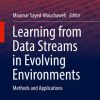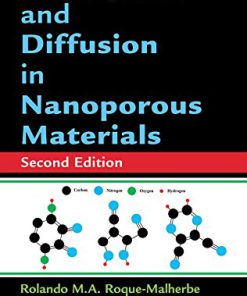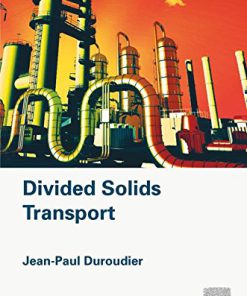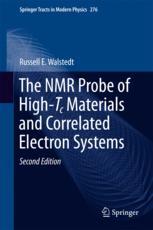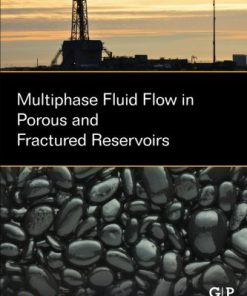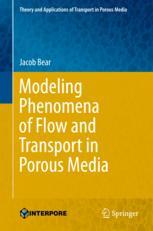Diffusion Nmr of Confined Systems Fluid Transport in Porous Solids and Heterogeneous Materials 1st edition by Rustem Valiullin 1782623779 9781782623779
$50.00 Original price was: $50.00.$25.00Current price is: $25.00.
Diffusion Nmr of Confined Systems Fluid Transport in Porous Solids and Heterogeneous Materials 1st edition by Rustem Valiullin – Ebook Instant Download/Delivery ISBN(s): 1782623779, 9781782623779
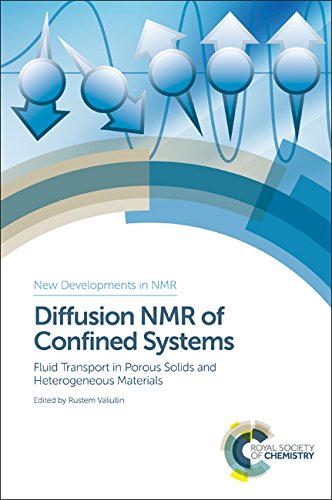
Product details:
- ISBN 10: 1782623779
- ISBN 13: 9781782623779
- Author: Rustem
With the increasing role of porous solids in conventional and newly emerging technologies, there is an urgent need for a deeper understanding of fluid behaviour confined to pore spaces of these materials especially with regard to their transport properties. From its early years, NMR has been recognized as a powerful experimental technique enabling direct access to this information. In the last two decades, the methodological development of different NMR techniques to assess dynamic properties of adsorbed ensembles has been progressed. This book will report on these recent advances and look at new broader applications in engineering and medicine.
Having both academic and industrial relevance, this unique reference will be for specialists working in the research areas and for advanced graduate and postgraduate studies who want information on the versatility of diffusion NMR.
Table of contents:
Chapter 1 NMR under Confinement: Roots in Retrospect
References
Chapter 2 Fundamentals of Diffusion Measurements using NMR
2.1 What is Diffusion?
2.1.1 Self-diffusion, Mutual Diffusion, Flow and Dispersion
2.1.2 Free and Restricted Diffusion
2.1.3 Diffusion in General Porous Media
2.2 How to Measure Diffusion using Magnetic Resonance
2.2.1 Radiofrequency Pulses and Gradients
2.2.2 Pulsed Gradient Diffusion Sequences
2.2.3 The Torrey-Bloch Equations and Application to the PGSE Sequence
2.2.4 Anisotropic Systems with Uniform Orientation
2.2.5 Anisotropic Systems with Powder Distributions
2.3 Experimental Measurements
2.3.1 An ‘Ideal PGSE’ Experiment and Analysis
2.3.2 Optimising PGSE Experiments
2.3.3 Real Experiments, Complications and Solutions
References
Chapter 3 From the Microstructure to Diffusion NMR, and Back
3.1 Introduction
3.2 Mathematical Background
3.2.1 Bloch-Torrey Equation
3.3 Boundary Conditions
3.4 Diffusion-weighting Magnetic Field
3.5 Characteristic Scales
3.6 Solutions of the Bloch-Torrey Equation
3.7 Theoretical Approaches
3.7.1 Narrow-pulse Approximation
3.7.2 Gaussian Phase Approximation
3.8 Diffusion in Multi-compartmental Tissue
3.8.1 Multi-exponential and Distributed Signals
3.8.2 Bi-exponential Model
3.8.3 Kärger Model
3.8.4 Anomalous Diffusion Models
3.8.5 Effective Medium Theory
3.9 Towards Microscopic Geometric Models
3.10 Towards High Gradients
3.11 Conclusions and Perspectives
References
Chapter 4 Two-dimensional NMR of Diffusion and Relaxation
4.1 Introduction
4.2 Basic Pulse Sequence Building Blocks and Experiments
4.2.1 Relaxation Correlation Experiments
4.2.2 Diffusion-Relaxation Correlation Experiments
4.2.3 Correlation Experiments in Static Field Gradients
4.2.4 Correlation Experiments in RF Field Gradients
4.2.5 Mixed Diffusion and Relaxation Experiment
4.2.6 Diffusion Time Correlation Experiment
4.2.7 Diffusion Anisotropy Correlation
4.2.8 DDIF-CPMG
4.2.9 Fast Acquisition of 2D NMR
4.2.10 Summary
4.3 Diffusion Dynamics in Porous Media
4.3.1 Theory
4.3.2 NMR Experiments
4.4 Laplace Inversion
4.4.1 General Theory
4.4.2 Data Compression
4.4.3 Mellin Transform
4.4.4 Max Entropy Method
4.4.5 Monte Carlo Inversion
4.4.6 Time-domain Analysis
4.4.7 Summary
4.5 Applications
4.5.1 Well-logging
4.5.2 Water Saturation
4.5.3 Drilling Fluid Invasion
4.5.4 Oil Composition Measurement
4.5.5 Surface Relaxivity
4.5.6 Diffusion Correlation
4.5.7 Pore Structure
4.5.8 Nanoporous Shales
4.5.9 Biological Materials
4.5.10 Food Materials
4.5.11 Cement and Other Materials
4.5.12 Environmental Sciences
4.6 Instrumentation
4.7 Summary
References
Chapter 5 Transport in Structured Media: Multidimensional PFG-NMR Applied to Diffusion and Flow Proc
5.1 Introduction: Diffusion vs. Transport
5.2 Theoretical Background
5.2.1 Encoding of Transport Properties
5.2.2 Two- and Higher-dimensional Sequences
5.3 Examples for Flow and Correlations in Displacements
5.3.1 Velocity EXchange SpectroscopY (VEXSY)
5.3.2 Diffusion EXchange SpectroscopY (DEXSY)
5.3.3 Two- and Three-dimensional Propagators
5.3.4 Local Anisotropy of Diffusion
5.4 Velocity Encoding and Imaging: Recent Developments
5.5 Summary
References
Chapter 6 Real Time PGSE NMR Through Direct Acquisition of Averaged Propagators in the Time Domain U
6.1 Introduction
6.1.1 General Background
6.1.2 PGSE NMR for Diffusion and Flow
6.2 Time Domain Signal as the Averaged Propagator
6.2.1 The Conventional PGSE Experiment
6.2.2 The PGSE Experiment using Second Order Magnetic Fields
6.3 Applications
6.3.1 Real Time Propagator Measurements
6.3.2 Single-shot Surface-to-volume Ratios for Porous Materials
6.4 Conclusions
References
Chapter 7 NMR Methods for Studying Microscopic Diffusion Anisotropy
7.1 Introduction
7.2 Tensors
7.2.1 Tensor Size and Shape
7.2.2 Tensors with Axial Symmetry
7.2.3 Alternative Measures of Tensor Anisotropy
7.3 Ensembles of Diffusion Tensors
7.3.1 Diffusion Tensor Distributions
7.3.2 Size and Shape Distributions
7.3.3 Means and Variances
7.3.4 Orientation Distributions and Order Tensors
7.3.5 Ensemble-averaged Diffusion Tensor
7.4 NMR Methods and Application Examples
7.4.1 Diffusion Encoding with Magnetic Field Gradients
7.4.2 Method Classification Based on the Shape of the b-Tensor
7.4.3 General Principles for Designing Measurement Protocols
7.4.4 Signal from Powders
7.4.5 Powder-averaging of the Signal
7.4.6 Detecting Microscopic Diffusion Anisotropy
7.4.7 Cumulant Expansion of the Signal
7.4.8 Variance of Isotropic Diffusivities and Mean-square Anisotropy from the 2nd Moment
7.4.9 Model-free Estimation of the 2nd Moment
7.4.10 Mapping the Variance of Isotropic Diffusivities and Mean-square Anisotropy
7.4.11 Mapping Microscopic Diffusion Tensors and Orientational Order Tensors
7.4.12 Microscopic Anisotropy Parameters for Clinical MRI
7.4.13 Removing the Need for Powder Averaging: The Covariance Tensor
7.4.14 2D Size-shape Diffusion Tensor Distribution
7.5 Conclusions
Acknowledgments
References
Chapter 8 Beyond the Limits of Conventional Pulsed Gradient Spin Echo (PGSE) Diffusometry: Generaliz
8.1 Introduction
8.2 Diffusometry using the B0 Gradients of the Fringe Field of Magnets
8.2.1 Formalism for the Fringe-field SGSE Technique
8.2.2 Determination of the Size of Polymeric Capsules with the Aid of the Fringe-field SGSE Techniqu
8.3 Diffusometry using B1 Gradients
8.3.1 Stimulated Rotary Spin Echo
8.3.2 Nutation Spin Echo
8.3.3 MAGROFI
8.3.4 Applications of Rotating-frame Techniques for Diffusion Studies
8.4 Laboratory-frame Diffusometry Based on Non-linear (or ‘‘multiple”) Stimulated Echoes
8.4.1 The Demagnetizing Field
8.4.2 Formation of Non-linear Stimulated Echoes and Evaluation of Diffusion Coefficients
8.5 Conclusions
Acknowledgments
References
Chapter 9 Probing Exchange and Diffusion in Confined Systems by 129Xe NMR Spectroscopy
9.1 Introduction to the Use of 129Xe NMR to Investigate the Structure and Transport Phenomena in Con
9.2 Theoretical Background and Hardware
9.2.1 Factors Influencing the Chemical Shift of 129Xe
9.2.2 The Spin Exchange Optical Pumping Method
9.2.3 Hardware Aspects
9.3 NMR Experiments and their Application
9.3.1 EXSY-experiments
9.3.2 The Hyperpolarized Tracer Exchange Experiment
9.3.3 The HyperCEST Approach
9.4 Summary
References
Chapter 10 Diffusive Dynamics in Porous Materials as Probed by NMR Relaxation-based Techniques
10.1 Introduction
10.2 Limiting Nuclear Magnetic Relaxation Processes of a Liquid in Pores
10.3 Nuclear Magnetic Relaxation Dispersion of Longitudinal Relaxation Rate in Calibrated Micropores
10.3.1 Theory
10.3.2 Application to Aprotic Liquids
10.3.3 Application to Protic (Water) Liquid
10.4 Continuous Multi-scales NMR Relaxation Investigation of Microstructure Evolution of Cement-base
10.5 Direct Probing of the Nano-wettability of Plaster Pastes
10.6 Dynamical Surface Affinity of Diphasic Liquids as a Probe of Wettability of Multimodal Macropor
10.7 Dynamics and Wettability of Oil and Water in the Dual Organic and Mineral Porosity of Shales Oi
10.7.1 Samples
10.7.2 Methods
10.7.3 Interpretation of the Nuclear Magnetic Relaxation Dispersion Data
10.8 Conclusion
Acknowledgments
References
Chapter 11 Industrial Applications of Magnetic Resonance Diffusion and Relaxation Time Measurements
11.1 Introduction
11.2 NMR Petrophysics
11.2.1 Magnetic Resonance Well Logging
11.2.2 Laboratory Core Analysis
11.2.3 Relaxation Time Distributions
11.2.4 Diffusion as a Contrast Mechanism
11.2.5 Internal Gradients
11.3 Rock Lithology
11.3.1 Sandstone
11.3.2 Carbonates
11.3.3 Unconventionals
11.4 Advanced NMR Petrophysics
11.4.1 Wettability
11.4.2 Capillary Pressure
11.4.3 Hydrodynamics
11.4.4 Oil Recovery
11.5 Applications in Other Industries
11.6 Summary
Acknowledgments
References
Chapter 12 Confined Fluids: NMR Perspectives on Confinements and on Fluid Dynamics
12.1 Introduction
12.2 Basic Properties of Confined Fluids
12.2.1 Phase State
12.2.2 Diffusion Mechanisms
12.2.3 Trajectory Analysis for Multi-phase Systems
12.2.4 Restricted Diffusion
12.2.5 Potentials of NMR for Delivering Complementary Information
12.3 Structural Information Accessible by Diffusion NMR
12.3.1 Tortuosity of the Pore Space
12.3.2 Surface-to-volume Ratio
12.3.3 Pore Size in Closed and Interconnected Pore Systems
12.3.4 Pore Space Anisotropy
12.3.5 Hierarchical Pore Spaces
12.3.6 Pore Space Organization
12.4 Fluid Behavior in Confined Spaces
12.4.1 Surface Diffusion
12.4.2 Global Equilibration Dynamics
12.4.3 Memory Effects in Confined Fluids
12.4.4 Ergodicity Theorem for Diffusion
12.5 Conclusions and Perspectives
References
Chapter 13 NMR and Complementary Approaches to Establishing Structure-Transport Relationships in Dis
13.1 Introduction
13.2 Surface Diffusion
13.2.1 NMR Studies of Surface Diffusion
13.2.2 Structure-Transport Model for Surface Diffusion Validated by NMR
13.3 Pore Diffusion
13.4 Structural Characterization and its Validation
13.4.1 Gas Sorption
13.4.2 Pore-Pore Co-operation Effects
13.4.3 Cryoporometry
13.4.4 Application of NMR Diffusometry to Improving Structural Characterization
13.5 Conclusion
References
Chapter 14 NMR Diffusometry for the Study of Energy-related Soft Materials
14.1 Introduction to Energy-related Soft Materials
14.1.1 Soft Materials: Polymers, Ionic Liquids, Plastic Crystals, Liquid Crystals, Gels
14.1.2 Morphology vs. Molecular Features that Influence Transport
14.2 How Can NMR Diffusometry Help Us Understand Soft Materials?
14.2.1 Overview: Chemical Selectivity and Tunable Translational Time/Length Scale
14.2.2 Signal Analysis: SGP and GPD Approximations
14.2.3 Restricted Diffusion in Polymer Membranes
14.2.4 Activation Energy: A Window into Molecular Motion on ~1 nm Scales
14.3 Key Challenges and Experimental Aspects in Nanostructured Soft Materials
14.3.1 Lower Length-scale Limit, Short T2, and Signal Loss
14.3.2 Artifacts When Using High Gradients to Observe Slow Diffusing Species
14.3.3 Pre-averaging over Small Length Scale Heterogeneity
14.3.4 Fruitful Combinations of NMR Techniques: Multimodal NMR
14.4 Key Applications in Energy-related Soft Materials
14.4.1 Nanostructured Ionic Polymer Membranes: Nanochannel Alignment and Diffusion Anisotropy
14.4.2 Ionic Liquids Inside Nanostructured Polymers: Ion Associations
14.4.3 Organic Ionic Plastic Crystals
14.4.4 Ion Motions in Polymer-gel Battery Electrolytes
14.5 Conclusion and Outlook
Acknowledgments
References
Chapter 15 Diffusion Magnetic Resonance Imaging in Brain Tissue
15.1 Introduction
15.1.1 Diffusion Basics
15.1.2 How are dMRI Experiments Performed?
15.2 Water Diffusion in Brain Tissue
15.2.1 Complex Brain Microstructure and the Apparent Diffusion Coefficient
15.2.2 Diffusion Tensor Imaging
15.2.3 Non-Gaussian Diffusion
15.3 Selected Applications of dMRI
15.3.1 Diffusion Contrast in Ischemic Stroke
15.3.2 Diffusion Changes in Development and Aging
15.3.3 Fibre Tractography and Human Connectomics
15.4 Conclusions
References
Chapter 16 Surface Effect Dominates Water Diffusion at Nanoscopic Length Scales
16.1 Introduction
16.2 1H ODNP Theory and Analysis of Local Water Diffusivity
16.2.1 Moving from ξ to Dbulk/Dlocal
16.2.2 Experimentally Determining ξ
16.3 Results: ODNP Case Studies
16.3.1 Translational Diffusivity of LUV Surface Water and Its Activation Energy
16.3.2 Decoupling of Surface Water Dynamics on LUV from Bulk Solvent Viscosity
16.3.3 LUV Bilayer-internal Water Diffusion and Its Activation Energy
16.3.4 Lipid Membrane Integrity Relies on Stable Hydration Shell
16.3.5 Effect of Confinement in a Biological GroEL/GroES Chaperone on Water
16.3.6 Heterogeneous Water Dynamics within Nafion® Inner Membranes
16.4 Conclusion
People also search:
diffusion mass transfer in fluid systems
nmr diffusion coefficient
nmr diffusion
confined diffusion
nmr diffusometry
You may also like…
Engineering
Adsorption and Diffusion in Nanoporous Materials, Second Edition Rolando M.A. Roque-Malherbe
Engineering
Engineering - Mechanical Engineering & Dynamics
Engineering


